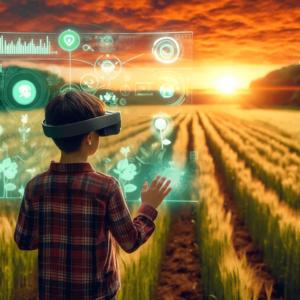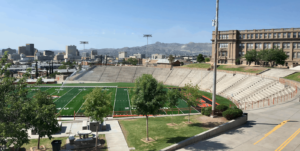Taking the Classroom Out of Physics With Mobile Devices

Juha Pietiläinen, Founder, Sideric Inc. and Mathematics and physics teacher
Despite the ever-growing penetration of mobile devices and wider acceptance of BYOD, I feel that a lot of the potential of mobile learning is being underexploited. Many of the solutions are focused on wrapping up content and disseminating it to students. As important this is, we should demand more.
The greatest and the most authentic learning environment is the real world. That is also where the learned skills will be put to use; So let’s take the learning into that environment.
Smartphones are great because you carry them around and use them to interact with people and, increasingly, also with the physical world. I think that right now the main question in science teaching is how to use these features to enhance scientific thinking in students. The obvious answer is a system for doing experiments with mobile devices.
Sideric is a Helsinki, FInland based company specialized in intelligent learning solutions. Our app Sensor Tools uses iPhone and iPad sensors and internet connectivity to turn the iPhone or iPad into a personal instrument for physics experiments and learning.
With Sensor Tools you can conduct experiments almost anywhere you like. You can also do some basic analysis of the data and share your results via Dropbox.
All the data and material (like video footage) created with sensor tools is open, and can be easily exported for use with other software. I feel very strongly about the ownership of one’s data and think it is important that we allow our users to use their data anyway they like.
The current version of Sensor Tools has two modules: Motion Tracking for capturing, analyzing, and plotting the motion of, e.g., a falling ball or a glider on an air cushion track, and Light Refraction for analyzing the refraction of light from one medium to another and determining the index of refraction. This is an on going project and we are actively working on new modules to further the scope of our app.
Although there are other apps that capture sensor data, they are clearly not intended as pedagogical tools. It is said that a good pedagogical tool should have a low threshold and a high roof. Many of these apps have a high roof but their thresholds are also overwhelmingly high rendering them useless as pedagogical instruments in a school setting.
We have just completed a pilot program at the Helsinki University training school called The Normal Lyceum of Helsinki, or Norssi for short. During the pilot, the students found Sensor Tools very engaging and it increased their interest in doing experimental work. It also helped the majority of students in understanding the subject matter (different types of movement and their graphs).
What’s more, Sensor Tools saves time. With Sensor Tools the time for doing an experiment is reduced from as long as one hour to 10 minutes. Needless to say, this frees up time for discussion and for testing different ideas experimentally as they rise during discussion. I believe this is a big part of the engaging effect. With Sensor Tools the student gets the feeling of truly doing her own experiments and taking the leading role in her own learning.
Experiments are an integral part of physics and other natural sciences. To really know science is to understand its methods and with mobile technology gaining more and more ground there is an opportunity for a new way to further this understanding. I think Sensor Tools is a great first step on this way.
Photo Courtesy of BigStock.







Steve Howell
An excellect idea. These devices, with their cameras and acceleromters, are crying out to be used a lot more as sensing devices in physics lessons.
I am currently working at the other end of the scale: using the processing and graphics power of the devices to create realistic 3D simulations of all aspects of physics (as opposed to just the Newtonian mechanics in standard physics engines) so as to create realistic virtual alternatives to experiments for situations where real-world experimentation is not possible or practical.
But, of course, as the article points out, physics is about the real world. And anything that can make real experiments more possible and practical has to be a good thing.
Juha Pietilainen
Hi Steve,
Sounds really interesting. In my experience simulations are effective, motivating and engaging for the students. Optimally the students get to use both the real experiments and the simulations.
The experiments consume a lot of time, and doing them can be tricky. With mobile technology you can speed up the process and put the cognitive load in the right place.
On the other hand simulations can be used to conduct experiments with the desired model without doing the cognitively loading and time consuming actual experiments and measurements in the real world.
The idea, I think, is to swap between real world measurements and simulations as best fits the situation. These two approaches really complement each other. It’s a perfect match.